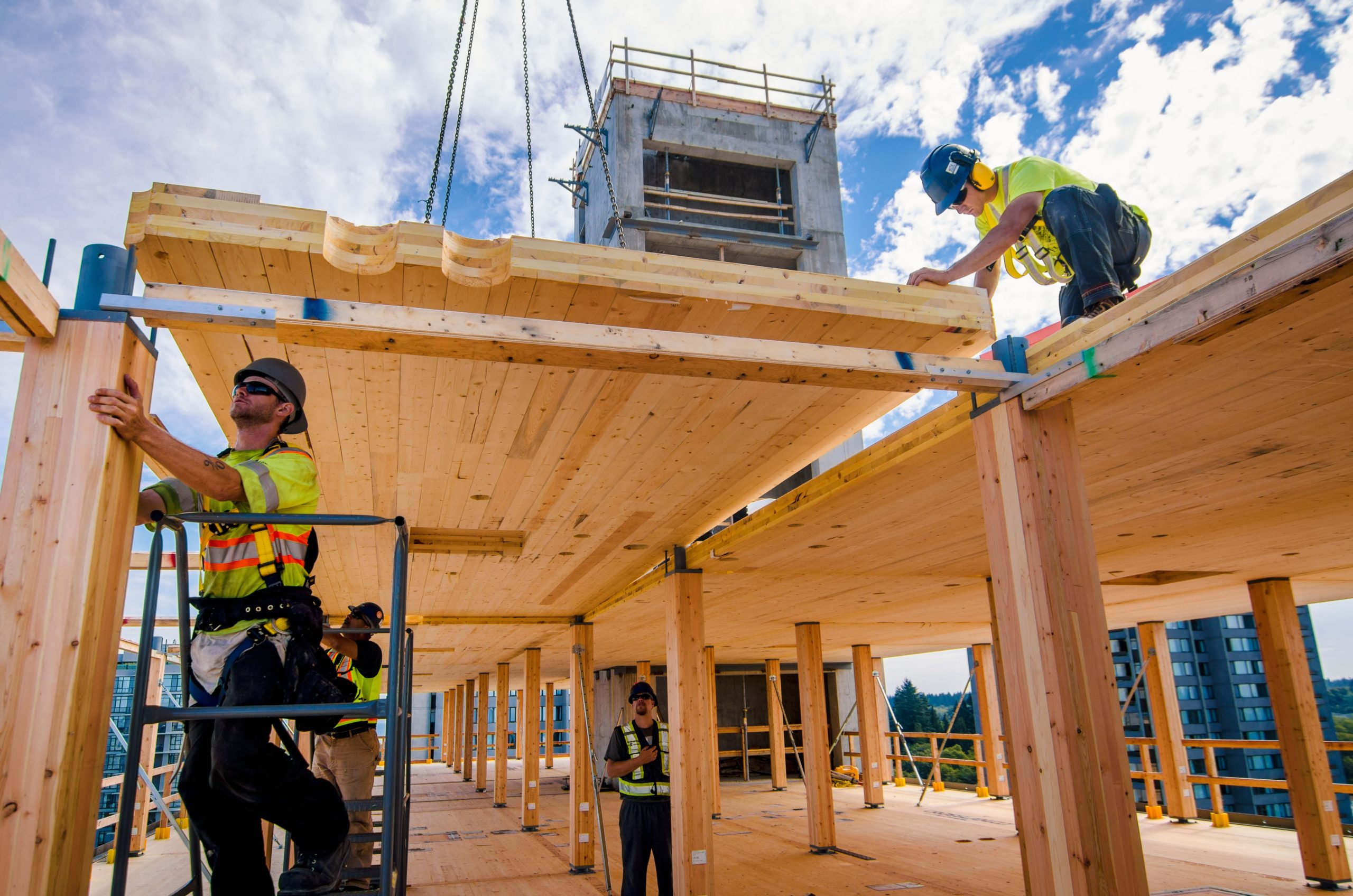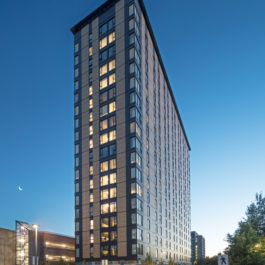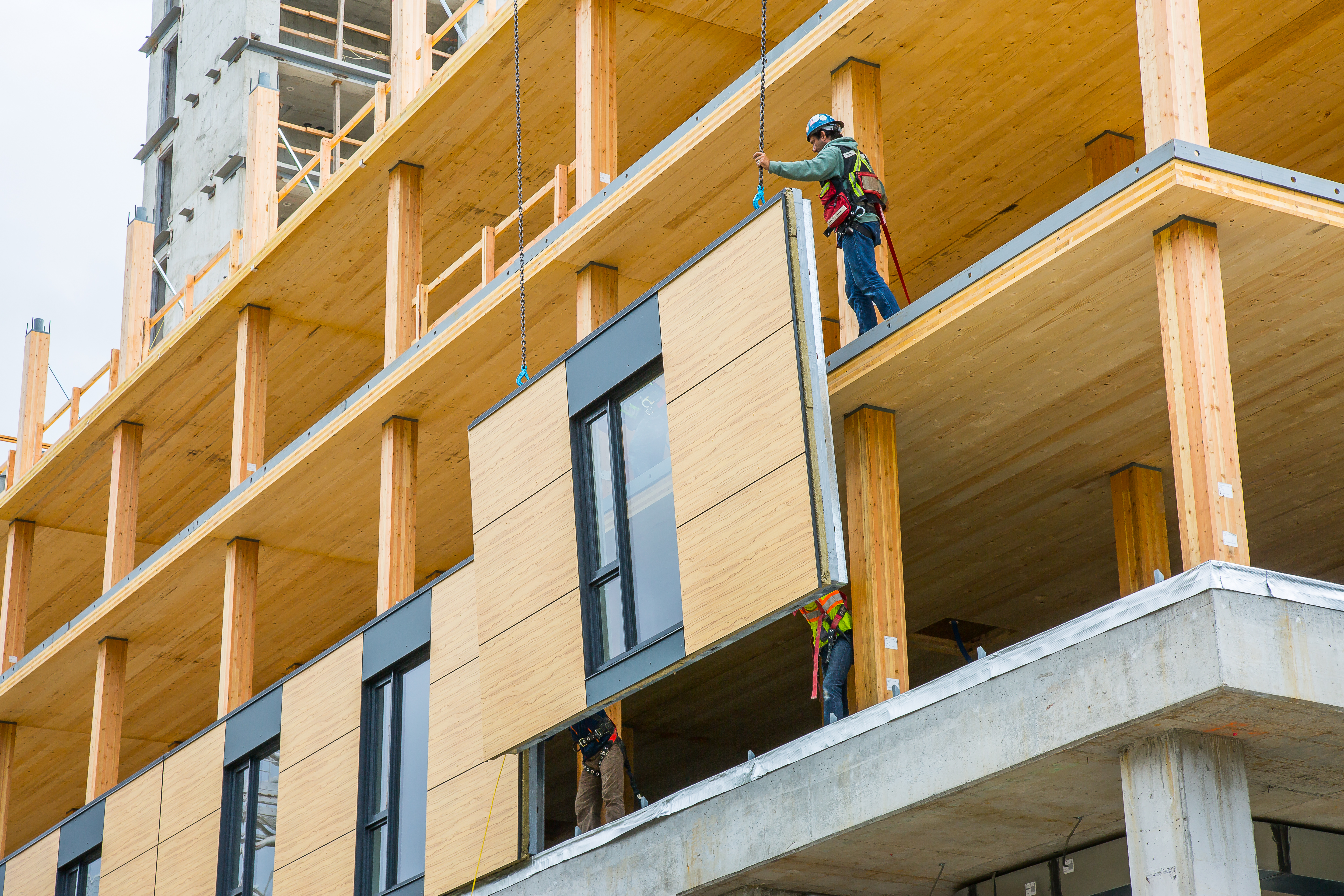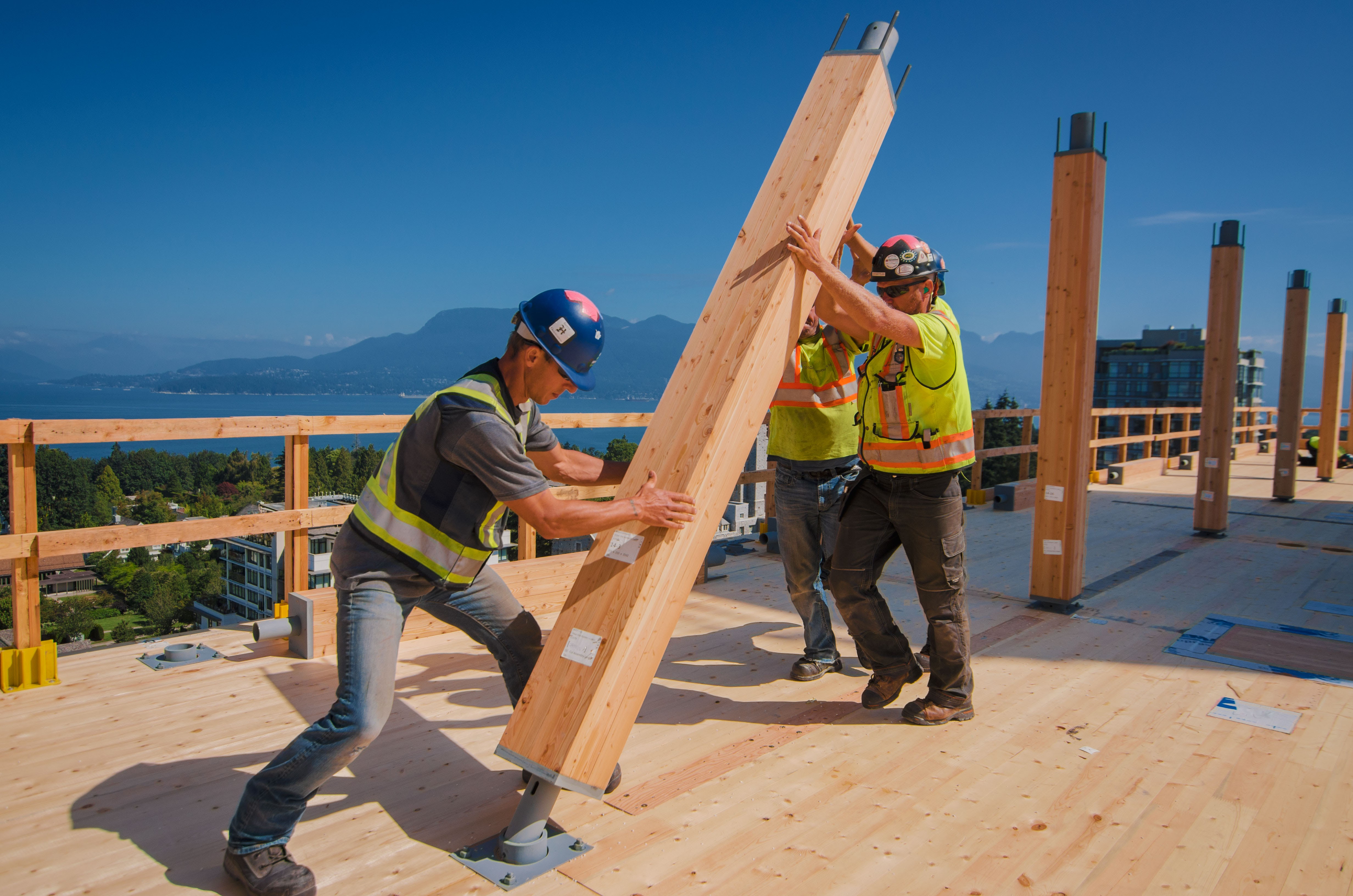Acton Ostry Architects & Fast + Epp: Brock Commons, Tallest Modern Timber Hi-Rise

Projects Sponsor
I imagine Acton Ostry Architects would somewhat prefer that we not be making too big a fuss about their recently constructed Brock Commons Tallwood House that now graces the University of British Columbia Point Grey campus. At the time of completion in 2017, the innovative LEED Gold certified, 18-storey, 53 metre high, tall wood student residence that houses 404 students was the tallest contemporary mass timber building in the world. Yet in an ideal world, that would be a more mundane achievement.
The beauty of building with timber over concrete is that not only is far, far less CO2 emitted—the amount of CO2 emissions involved in creating a made-from-cement-concrete structure is staggering—the CO2 embedded in the wood is it also sequestered for the life of the building and beyond. Faced with climate crisis, timber construction should be a less newsworthy and more natural choice, but here we are.
The Brock Commons Tallwood House project, part of the 2013 National Resources Canada Tall Wood Building Demonstration Initiative, aimed to demonstrate that mass wood structures are indeed a viable structural option for high-rise buildings. The finished project stores an impressive 1,753 metric tons of carbon dioxide and avoided production of 679 metric tons of greenhouse gas emissions.
A key mandate set by UBC was that the design had to be economical in order to effectively demonstrate to the development industry that tall mass timber structures can be a realistic alternative to concrete structures. Easily fulfilling that mandate, the construction project provided rare reliable data confirming the fiscal feasibility of timber buildings. The construction cost for Tallwood House was $40.5 million or $2,668/m2 ($248/ ft2)2017. Analysis showed that a comparable conventional concrete building would cost $37.8 million or $2,496/m2 ($232/ft2). Therefore, the cost premium for the first-of-its-kind tall wood building was estimated to be approximately 7% of a comparable concrete high-rise.
The mass timber structure for Tallwood House cost approximately $548/m2 ($51/ft2), while a comparable concrete structure cost about $516/m2 ($48/ft2). The cost of the mass wood structural components was approximately 20% of the total construction cost—the same as a comparable concrete structure.
And the project wasn’t just cost efficient. The on-site erection crew, which averaged 9 workers, installed the mass timber structure and prefabricated facade in just 66 days at a rate of 2 floors per week. This is 9 weeks faster than a comparable concrete structure and there is nothing about the building that says “compromise.”
Key to receiving approvals and achieving economic viability for the deceptively ordinary-looking building was a “keep it simple” approach that encapsulates the wood structure with gypsum board to achieve code-required fire protection performance, cost savings benefits, and approval from the authorities to construct the project. With no exposed wood a more economical grade of wood could be specified, which reduced costs. In addition, the cross-section of the wood components could be reduced in size since there was no need to accommodate charring to achieve fire protection requirements, which reduced costs yet further.
But none of these financial or environmental achievements would mean anything, if this student residence wasn’t a great place in which students could reside.
A cross laminated timber canopy runs the length of a curtain wall base, revealing warm wood finishes at ground floor amenity spaces. Glulam columns are left exposed at an upper level amenity lounge. The student residence living units are spare and simple with a mix of bright white and warmly-hued finishes. The quintessential west coast ocean and mountain views are stunningly spectacular.
Coupled with sustainable forest management, building with timber has an important role to play in addressing climate change and in order for the nascent timber building industry to achieve its obvious potential, tall timber buildings must become commonplace. This will only happen if they are affordable to build. To be truly environmentally meaningful, mass wood structures must be incorporated into buildings of all types and sizes, from the audacious to the everyday, whether the wood structure is exposed or not.
Wonderful to see as it is, Tallwood House aspires to be a model for a future that features extraordinarily ordinary mass wood buildings, buildings that are quick, clean and cost effective to construct and that maximize carbon sequestering and reduction of greenhouse gas emissions. Let’s hope that one day, we don’t see this particular tall timber structure, for the forest.


















